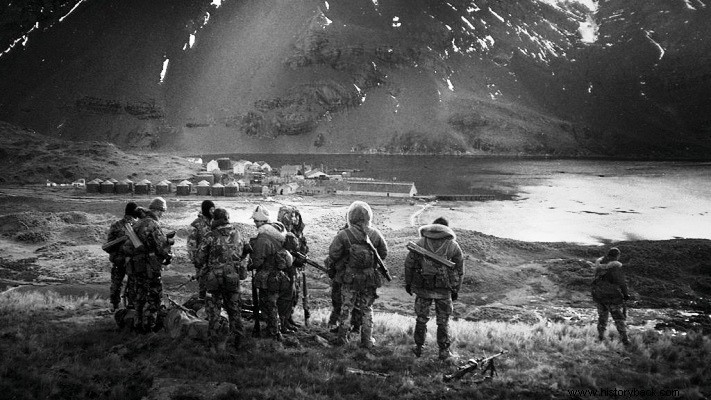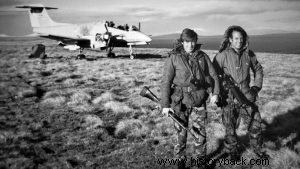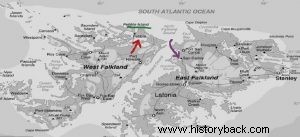
The Falklands War broke out on 2 April 1982 when Argentina occupied the islands of the same name as well as the island of South Georgia. The British reacted and a few days later their ships approached the islands.
Pebble Island is one of several in the Falkland Islands. It is located north of the West Falklands and there used to be an Argentinean airbase where FMA IA 58 Pucara attack aircraft were based. , light attack/trainer T-34 Turbo Mentor and switches. Ammunition and fuel depots had also been created at the base.
The Argentinians, immediately after occupying the Falklands, built the air base on Pebble Island, which, however, posed a serious threat to the British , as there was a chance that the enemy aircraft might have attacked the landing forces that were expected.
Thus it was decided to destroy the base and the aircraft there. The mission was assigned to the famous SAS (Special Air Service) which is part of the Special Forces of the British armed forces. A team from D Squadron of the SAS carried out reconnaissance by canoeing over to the island.
These experienced men realized that due to the bad weather conditions the assault division would have only 30 minutes to carry out its mission as the flying time of the helicopters that would transport it from the British ships would be increased due to the weather. This report changed the plans of the British which initially predicted the actual destruction of the base and the neutralization of its personnel. Now priority was given to destroying the aircraft.
Preparation
The raid was decided to be carried out on the night of May 14-15. The entire operation was directed by Major Cedric Delves of the 22nd SAS Regiment with second-in-command Captain Gavin Hamilton, commanding officer of D Squadron. A total of 45 men from D Squadron of the SAS would be flown to the island by two Westland Sea King HC4 helicopters from 846 Naval Squadron.
The British commandos would disembark from the helicopters at a point 6 km from the base. The British carried explosive charges and L1A1 (British name for the well-known 66mm LAW) portable anti-tank launchers. The British commandos were armed with M-16 assault rifles, some with a modified grenade launcher. The section would be led by the men who had carried out the previous reconnaissance. The operation was supported from the sea by the old destroyer HMS Glamorgan .
Attack
The British commandos landed safely on the island flying from the aircraft carrier HMS Hermes. Part of the men deployed around the perimeter of the air landing zone while the assault section moved towards the objective. The British saw an Argentinian purpose which they did not understand.
So they approached the aircraft without problem and placed explosives on seven of them. When the explosives were planted the British opened fire with their guns and portable anti-tank launchers hitting all enemy aircraft.
Opening fire was the signal for the destroyer HMS Glamorgan to also open fire with its two 114 mm guns. (4.5in). The ship's fire was particularly accurate, hitting the Argentine fuel and ammunition depots.
The Argentine garrison – 150 marines under Captain Ricardo Marega, completely taken by surprise, did not react than after the British had completed their destructive work and were preparing to withdraw. One Briton was wounded, but the commandos responded by shooting the Argentinian captain and forcing his men to "lufka".
The British retreated without a problem, carrying their wounded as well. They boarded the helicopters and returned to the aircraft carrier. The results of the attack were impressive, on a military and psychological level. A total of 11 aircraft were destroyed (six Pucaras, 4 T-34 Turbo Mentors, 1 Short SC7 Skyvan). The ammunition depot and the fuel depot were also destroyed.
In this way the threat to the incoming British landing force was eliminated. But the raid also had a psychological impact on both opponents. Derailed the morale of the Argentinians and raised the morale of the British.

Then-Major Delves (left) in front of a damaged Argentine Pucara.

